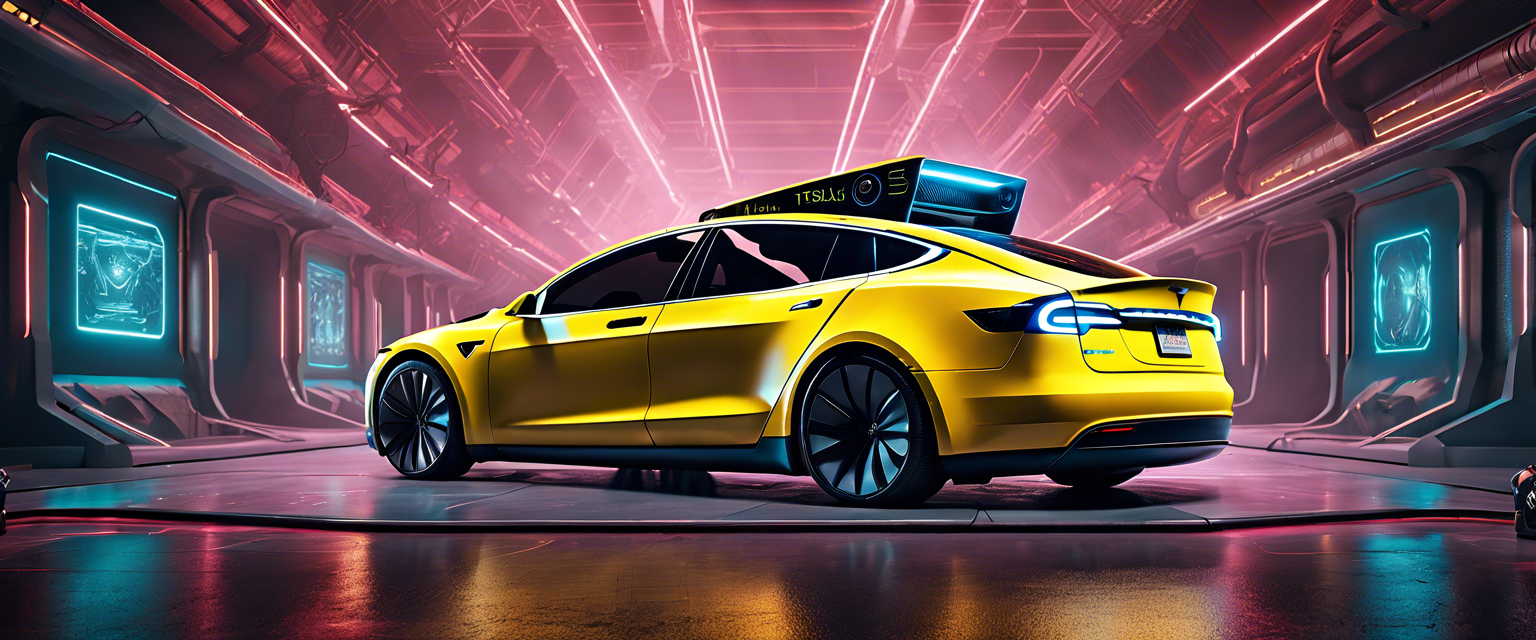Unveiling Tesla's Revolutionary Robotaxi: A Glimpse into the Future of Autonomous Vehicles
Tesla CEO Elon Musk recently introduced a groundbreaking electric vehicle dedicated solely to self-driving technology. This new robotaxi represents a significant milestone in Tesla's journey, following years of ambitious promises and missed deadlines in the realm of autonomous driving.
A Purpose-Built Autonomous Vehicle
The robotaxi stands out as a purpose-designed, fully autonomous vehicle, characterized by its unique design elements. Notably, it lacks both a steering wheel and pedals, which will necessitate regulatory approval prior to its launch into production. The vehicle is designed with futuristic aesthetics, featuring doors that resemble butterfly wings and an interior that accommodates just two passengers.
The "We, Robot" Launch Event
Musk unveiled the prototype robotaxi during Tesla’s "We, Robot" event, hosted at the Warner Bros. film lot in Burbank, California. This venue offers a range of private roads suitable for demonstration purposes. Reports suggest that Tesla has been actively mapping the area ahead of the event, although the company maintains that it does not rely on high-definition maps to enhance its Full Self-Driving (FSD) driver-assist capabilities.
Shifting Focus: From Vehicles to AI
Elon Musk seeks to transition Tesla away from its primary business of manufacturing electric vehicles and towards a future centered around robots and artificial intelligence. With Tesla's market capitalization rivalling that of all other global automakers combined, the company's stock price heavily rests on Musk’s ongoing promise to deliver a revolutionary vehicle capable of fully autonomous operation.
Challenges Ahead: Will the Robotaxi Deliver?
Despite the excitement surrounding the robotaxi, questions remain regarding whether it can fulfill the significant expectations set by Musk. Historically, Musk is known for overcoming challenges, yet autonomous vehicle (AV) experts have voiced reservations about Tesla’s strategy, especially regarding its fast-paced rollout of Level 2 driver-assist technologies like Autopilot and Full Self-Driving.
Concerns About Safety and Regulatory Scrutiny
While Tesla's driver-assist features have demonstrated some impressive capabilities, they have also been implicated in critical errors, leading to tragic incidents. In one notable case earlier this year, a motorcyclist died after being struck by a Tesla driver reportedly using FSD technology. As a result, Tesla faces increasing government scrutiny and has been forced to recall its driver-assist systems.
A Competitive Landscape
Currently, Tesla finds itself trailing competitors like Waymo and Cruise, both of which have invested significantly in extensive on-road testing for their autonomous vehicles. The rollout of robotaxi services has been fraught with challenges, including blocked vehicles, traffic congestion, and injury reports. As federal safety regulators investigate the safety of AV technology, the pressure mounts on Tesla to prove its vehicles' reliability.
Legal Challenges and Public Perception
Legal action has also emerged against Tesla, with families of drivers involved in fatal accidents while using the Autopilot feature pursuing wrongful death lawsuits. Additionally, Musk's leadership of X (formerly Twitter) has led to discontent among many of Tesla's progressive customers, who express concern over Musk's promotion of controversial right-wing ideologies on the platform.
Conclusion
The unveiling of Tesla's robotaxi heralds a potential turning point in the company's quest for autonomous driving perfection. As expectations mount and challenges loom large, only time will tell whether Musk can once again defy odds and deliver a truly revolutionary self-driving vehicle. Stakeholders will be closely watching as the robotaxi inches closer to reality amid a backdrop of scrutiny, safety concerns, and legal battles.



コメントを書く
全てのコメントは、掲載前にモデレートされます
このサイトはhCaptchaによって保護されており、hCaptchaプライバシーポリシーおよび利用規約が適用されます。